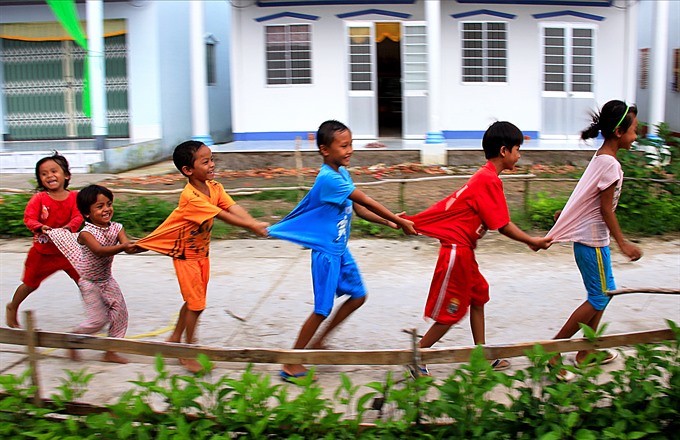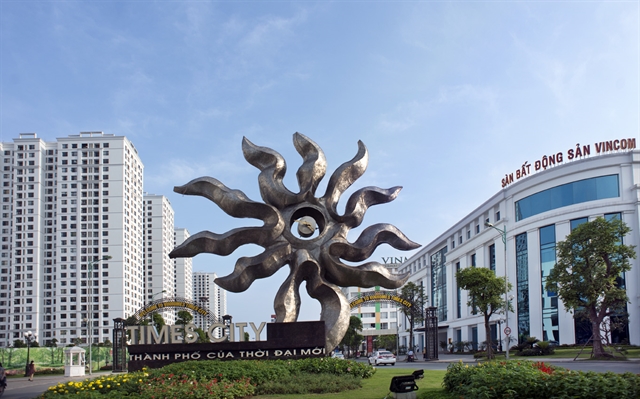 Society
Society

The number of out-of-school children aged from five to 14 has fallen significantly, particularly among five-year-old pre-primary children.
 |
| Khmer minority-ethnic children play at a playground at their resettlement area in the southern province of Cà Mau. — VNA/VNS Photo Thế Anh |
HÀ NỘI — The number of out-of-school children aged from five to 14 has fallen significantly, particularly among five-year-old pre-primary children.
This was one of the main findings of the Out-of-school Children: Việt Nam Country Study 2016 released yesterday by the Ministry of Education and Training (MOET) and the United Nations Children’s Fund (UNICEF).
According to the study, the percentage of ethnic children who have never attended school or who dropped out in 2014 was significantly lower than in 2009. The Khmer and the Mông made significant progress over the five-year period, but they still had the highest out-of-school rates of all the ethnic groups.
The study also showed a large disparity in the out-of-school rates for the poorest and the richest households. The difference increased with the level of education. For five-year-olds, the percentage of out-of-school children from the poorest households was three times higher than those from the richest households. This difference increased to 5.5 times higher for children of primary school age and 10 times higher for the children of lower secondary school age.
Children of primary and lower secondary school age in rural areas were more disadvantaged than those in urban areas in all regions, especially children in the rural parts of the mountainous Northern Midlands and the Central Highlands. Migrant groups consistently perform worse than non-migrant groups and the difference also increases with age.
Migrant families have a higher rate of out-of-school children than non-migrant families, specifically 1.2 times at the age of five, 1.6 times at primary school age and 1.7 times at lower secondary age.
The study analyses barriers and bottlenecks from both the demand side – children and their parents - and the supply side, including the education system as well as other related agencies at all levels.
Demand-side economic barriers were associated with poverty which restricted affordability of education. Supply-side barriers concern bottlenecks related to infrastructure and resources, teachers, education management and other systemic issues, such as learning programme, data system, governance, capacity and financing mechanism.
Nguyễn Thị Nghĩa, Deputy Minister of Education and Training, said: “Việt Nam has made significant progress in universalisation of primary and lower secondary education and has achieved Millennium Development Goals in education. The country is committed to the Sustainable Development Goals in Education.”
She said in this context, the report provided evidence that helped improve policy, legislation and education management to overcome the barriers and ensure that the right to education was realised for all children.
Yoshimi Nishino, UNICEF Việt Nam acting deputy representative, said: “Given the disparities that remain, I strongly encourage the Ministry of Education and Training, provincial Departments of Education and Training, related ministries and development partners to make the best use of this valuable dataset and to translate the analysis into critical policy revisions.”
The report recommends that more supportive policies should be implemented for poor students, ethnic minority students and concerned agencies should create good conditions for migrant ones.
It said the system of kindergartens and primary schools should be expanded in poor remote areas.
Issues related to children should be incorporated into socio-economic development plans from the central to grassroots levels.
The report utilised the data from the Intercensal Population and Housing Survey 2014 as the single source of data. The report provides a national analysis with more in-depth analysis for six provinces, including Lào Cai, Ninh Thuận, Kon Tum, HCM City, Đồng Tháp and An Giang. — VNS









